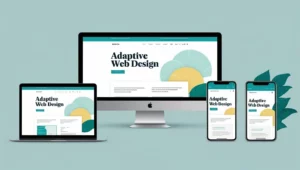Designing for All Devices: The Power of Adaptive Design
Introduction
Adaptive Design is a web design approach that ensures your website looks and functions perfectly on all devices, from desktops to smartphones. By creating tailored layouts for different screen sizes, it provides an optimal user experience regardless of the device.
What is Adaptive Design in Web Design?

Adaptive Design involves crafting multiple versions of a website to suit various screen resolutions and device types. Unlike responsive design, which adjusts dynamically, adaptive design relies on predefined layouts that load based on the user’s device.
- Focuses on device-specific layouts for better performance.
- Enhances user experience with tailored designs.
- Ensures consistency across different platforms.
Why is Adaptive Design Needed in Web Design?
In today’s multi-device world, Adaptive Design is essential for reaching diverse audiences and maintaining usability across platforms.
Device-Specific Optimization: Delivers the best layout and performance for each device.
Enhanced User Experience: Provides a seamless browsing experience tailored to the user’s screen.
Higher Engagement: Keeps users on the site longer with intuitive and accessible designs.
Future-Proofing: Adapts easily to new device types and resolutions.
Key Design Considerations
To implement effective Adaptive Design, consider these factors:
Define Breakpoints: Determine screen sizes for which unique layouts will be created.
Focus on Core Content: Ensure essential content is prioritized for smaller screens.
Optimize for Speed: Tailor images and assets to load quickly on each device.
Test Across Devices: Validate designs on multiple devices to ensure consistency.
Maintain Branding: Keep design elements aligned with the overall brand identity.
Closing Note
Ready to create a website that works seamlessly on every device? Our team specializes in Adaptive Design to ensure your site looks and performs its best everywhere. Contact us today to get started!
